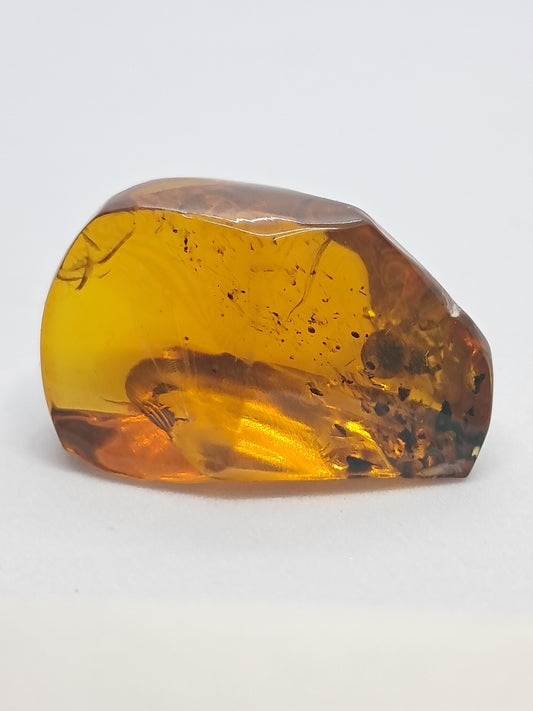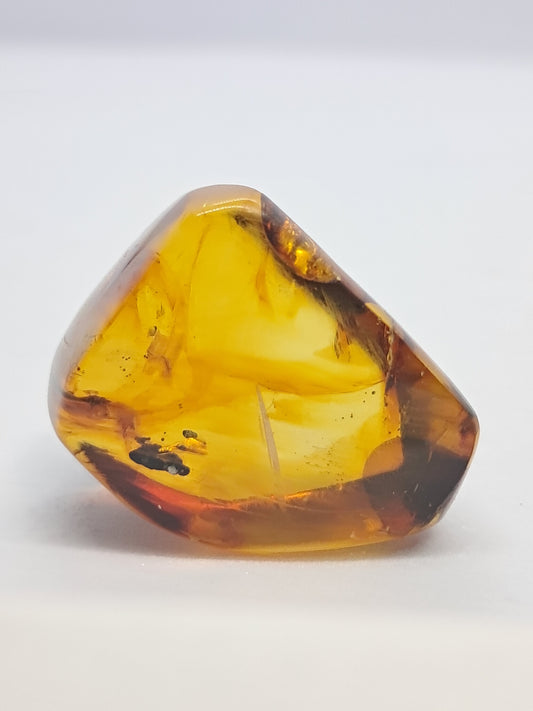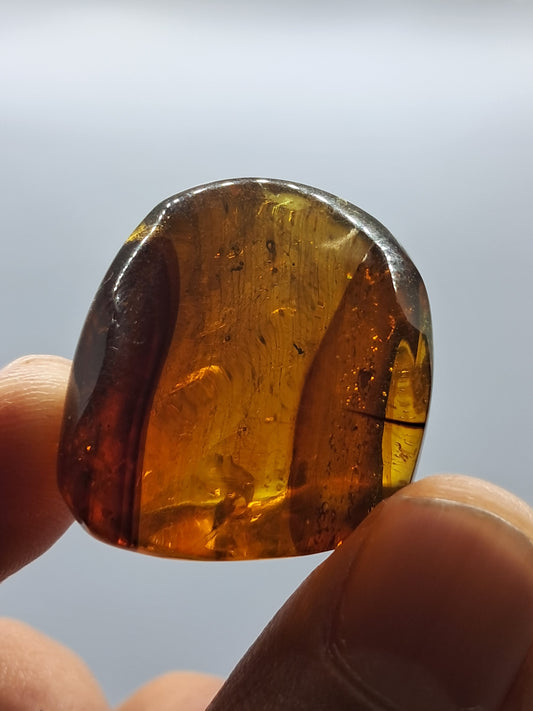Collection: Amber
Amber is not a mineral but an organic material formed from fossilized tree resin over millions of years. Through heat, pressure, and time, the resin hardens and may preserve ancient inclusions like insects or plant matter. Amber is mainly found in former forest regions such as the Baltic area, the Dominican Republic, Mexico, and Myanmar.
Energetically, Amber is a powerful purifier that transforms stagnant or negative energy into clear, usable vitality. Deeply connected to the solar plexus and sacral chakras, it supports physical healing, reduces inflammation and pain, and boosts circulation and overall energy. Amber is especially valued for protection, emotional warmth, and gentle support during recovery and times of stress.
-
Polished Amber (Mexico) Natural Fossilized Resin | Mineral Specimen #AB4
Regular price Rs. 1,290.00Regular priceUnit price / per -
Polished Amber (Mexico) Natural Fossilized Resin | Mineral Specimen #AB3
Regular price Rs. 1,500.00Regular priceUnit price / per -
Polished Amber (Mexico) Natural Fossilized Resin | Mineral Specimen #AB2
Regular price Rs. 1,710.00Regular priceUnit price / per



